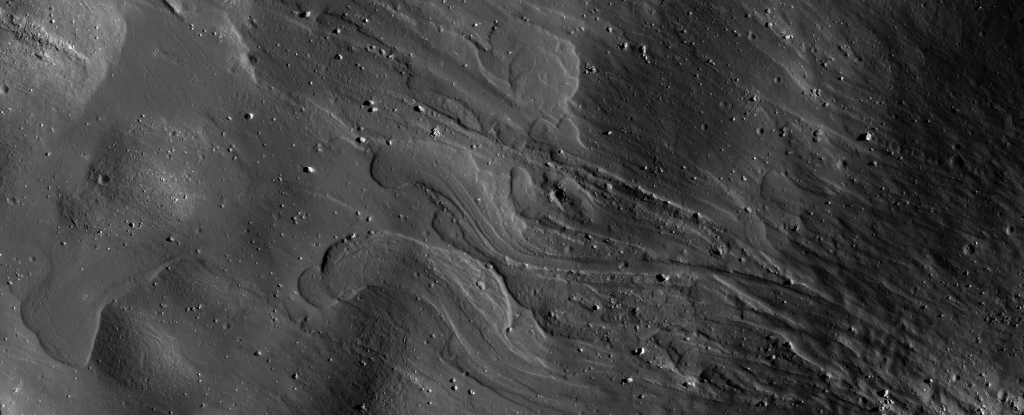The Moon is that world next door, a grey sphere that catches our eye but isn’t nearly as exciting as some of the other worlds out there, like ruddy Mars or brightly striped Jupiter or lava and ash spewing Io. While the Moon may not be the “It” world everyone has fantasies of sending a spacecraft to, it is the one we actually have the potential to visit, and have visited in the past. And we’re not just talking about visiting with robotic spacecraft, we’re looking forward to a not-too-distant day when humans can once again look back at Earth from the surface of the Moon.
With this community science project, we will explore Lunar Impact Melt flows. When large enough asteroids hit the Moon, the kinetic energy from the impact will carve out a crater and, in many cases, even melt enough rock to send white hot, gooey melt (it’s what we’d call “lava,” except that it didn’t erupt from underground) sloshing around the new crater and surrounding regions.

Flowing liquids — whether that liquid is water, lava, or impact melt — can carry heavy objects, including chunks of the Moon’s surface! If you find a really huge boulder sitting at the end of a lava or impact melt deposit, that means that the flow was at least strong enough to carry something that massive. Scientists who use computer models to simulate the flow of molten rock use the information on boulder size to estimate the strength of the flow. And, just like how more ice cubes do a better job of cooling your drink, the more solid rocks hanging around in molten rock — and the closer together they are — can affect how fast or slow the melt cools into a solid. But there are a lot of rocks. A lot. (You’re going to see this for yourself if you help with this project!) That’s where we need your help to mark the locations of rocks and to tell us the longest dimension on each boulder. When you click on individual rocks, you’re telling future computer code, “Hey! You need to account for all these rocks right here and how they affected the flow of molten rock!”
Craters that formed before and after the lunar melt flowed through the region also tell us about the Moon’s history. How big are our craters? Where are they? We need YOU to tell us, because these holes-in-the-ground can affect the path taken by the impact melt when it was molten. And, craters on top of impact melt deposits can tell us how deep the melt is.
You might think this is something some computer AI should be able to do, but the truth is, the technology just isn’t there yet. The material on the Moon’s surface comes in different colors and textures (and shadows are always changing). These variations can confuse an AI that can’t differentiate between a level spiral of different-colored materials and a topographic feature that shapes the Moon’s surface.

The work you are doing, mapping out the locations of different geologic features on the Moon, will be used today to produce new scientific understandings about Little Lowell Crater and Tycho Crater. In the future, it may be used to train machine learning algorithms to carry on the work we’ve started and look at new areas on the Moon.